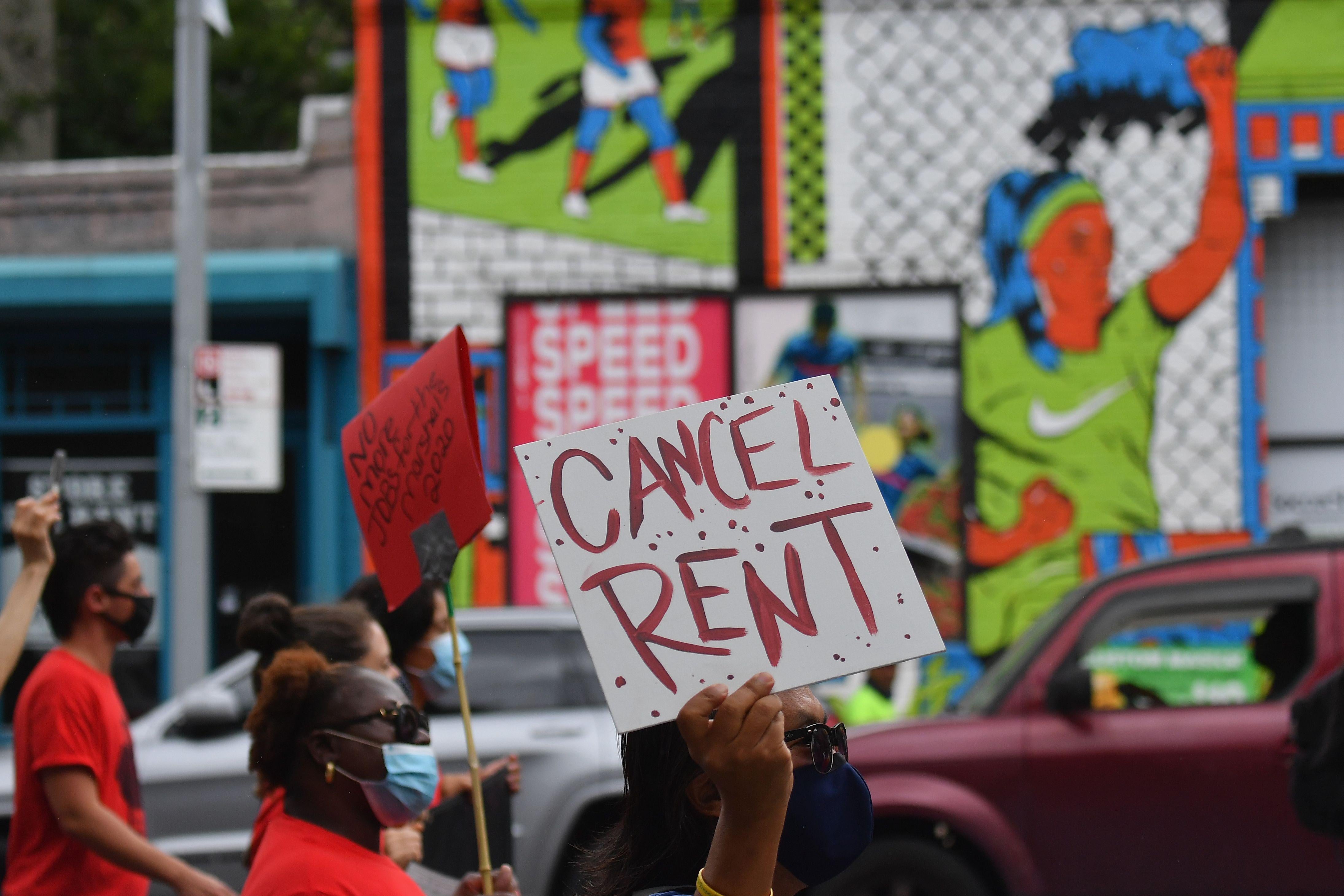The Trump administration gave struggling renters a much-needed reprieve on Tuesday when it announced a sweeping new eviction moratorium that could keep millions of Americans in their homes during the coming months as the coronavirus and mass unemployment linger on. One thing the announcement kind of glossed over: This won’t cancel any evictions, only delay them.
As many tenant advocates have warned, the administration’s plan is a temporary solution to the country’s bubbling housing challenges, one that won’t necessarily save every family in distress, even during the short term. “It is a stopgap measure. It will not be totally effective. People will definitely fall through the cracks,” David Dworkin, president and CEO of the National Housing Conference, told me. “The bigger problem is that it simply kicks the can down the road and doesn’t solve the core problem, which is that millions of Americans can’t pay their rent, and haven’t been paying their rent, and when this moratorium ends, there will still be mass evictions.”
To its credit, the White House is at least punting the can vigorously. The new order will bar any landlords from booting out tenants who are facing financial trouble until the end of the year. To be protected, renters must declare that they can’t pay their full rent because they’ve suffered a “substantial loss of income” and that, if they were evicted, they would likely become homeless or have to move into someone else’s house where they’d share “close quarters” (which, of course, could help spread COVID). This freeze should cover many more people than the one Congress included in the CARES Act, which expired in July, and only shielded renters if they lived in a property with a federally backed mortgage, or if their landlord received money from a federal housing assistance program, such as Section 8 vouchers.
It’s also a legally creative maneuver. The moratorium was issued by the Centers for Disease Control and Prevention, using a statute that gives the government authority to quarantine Americans in order to prevent the spread of disease. It seems likely that landlords will challenge the order in court, much as they have sued to overturn state-level eviction pauses. But so far, judges have rejected those efforts, and it seems plausible they will give the federal government some latitude here as well.
Assuming it survives any legal attacks, the moratorium should buy distressed renters some much-needed time at a moment when many are facing deep financial strain. States are only slowly starting to dole out the extra $300 a week in unemployment benefits the Trump administration has temporarily made available (just six have actually begun paying it), and the COVID-19 Eviction Defense Project has estimated that up to 1 in 5 Americans living in rentals could eventually be at risk of losing their housing. While a number of states, such as Massachusetts and Washington, have left eviction pauses and significant renter protections in place, many others, including Texas, have virtually none at the moment.
There are several reasons to worry, however, that some renters will slip through the moratorium’s holes. For starters, it puts the burden on tenants to defend themselves—they have to sign a document certifying they’re eligible for protection, then give it to their landlord—and some might not know it’s an option. Others could get nervous about the paperwork’s fine print, which states that renters who lie on their certification about whether they qualify could face fines or prison time. (The order threatens landlords with the same punishment if they wrongfully evict anyone.) That might not seem like giant hurdle. But many tenants facing eviction don’t have a lawyer to represent them, and some of the certification language is ambiguous. (I mean, do you know exactly what counts as a “substantial” loss of income, or “close quarters“?)
“A lot of people are going to be left trying to interpret this on their own,” Eric Dunn, director of litigation at the National Housing Law Project, told me. “And especially with the order being very clear about the kinds of penalties that people could face if they make a false statement, a lot of people will be erring on the side of caution. I do think these kinds of things will deter people from being able to take advantage of it, which is unfortunate.”
But ultimately, the moratorium’s design isn’t the thing that most tenant rights groups are worried about. Organizations likes the National Low Income Housing Coalition are welcoming it as a short-term solution that offers some immediate legal shelter to millions who might otherwise be forced onto the street, forced into a homeless shelter, or left couch surfing. The concern is that, if Congress doesn’t pass significant aid for renters in its next relief package (assuming there is a next relief package), we’ll only be delaying the crisis. The administration’s new order doesn’t cancel rent, after all. Landlords can continue charging it, along with interest and penalties for late payments. If there’s no new aid for renters come January, when the pause ends and all that back rent effectively comes due, evictions could spike. In the meantime, smaller landlords who can’t collect rent until the new year might find themselves unable to pay their mortgages, and in danger of default.
When Democrats in the House passed the HEROES Act back in May, they included $100 billion in emergency rental aid. If this moratorium serves as a short bridge to the point where Congress actually provides that sort of aid, then it could be helpful. But if not, we may just be putting off the inevitable. “What we learned from the moratorium in the CARES Act is that if you don’t fund rental assistance, it’s not going to be enough. That’s why we’re here now,” Dworkin said. “We don’t want to be doubling down on the mistake we made last time.”
